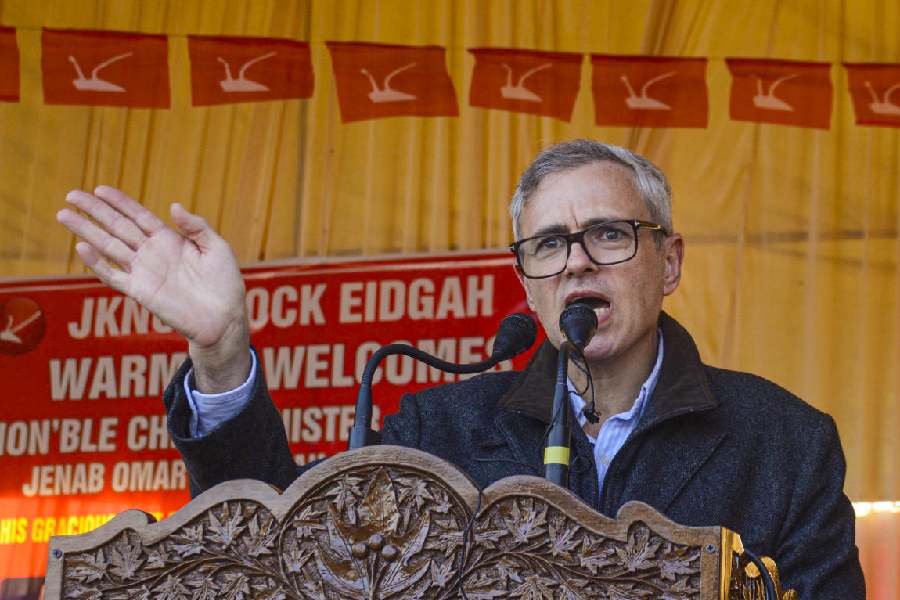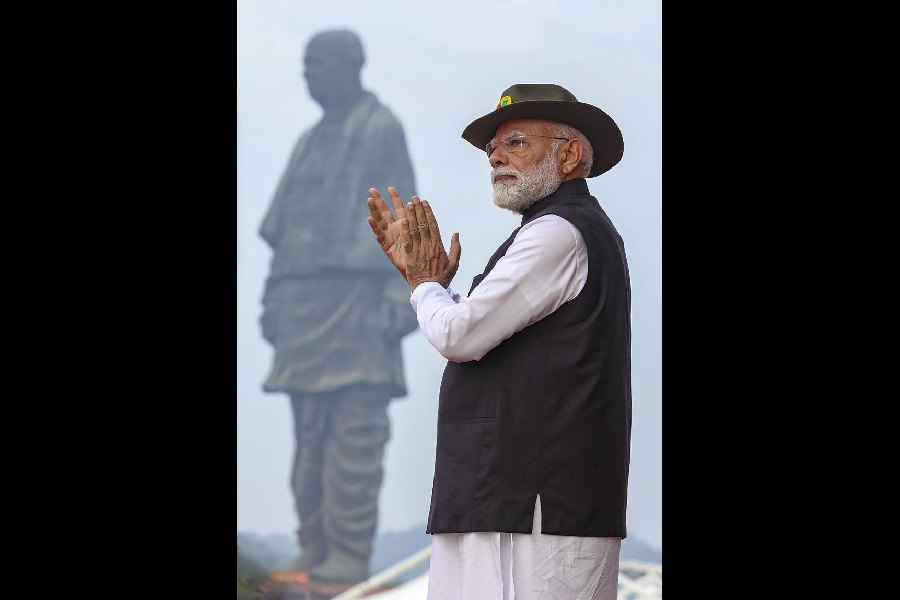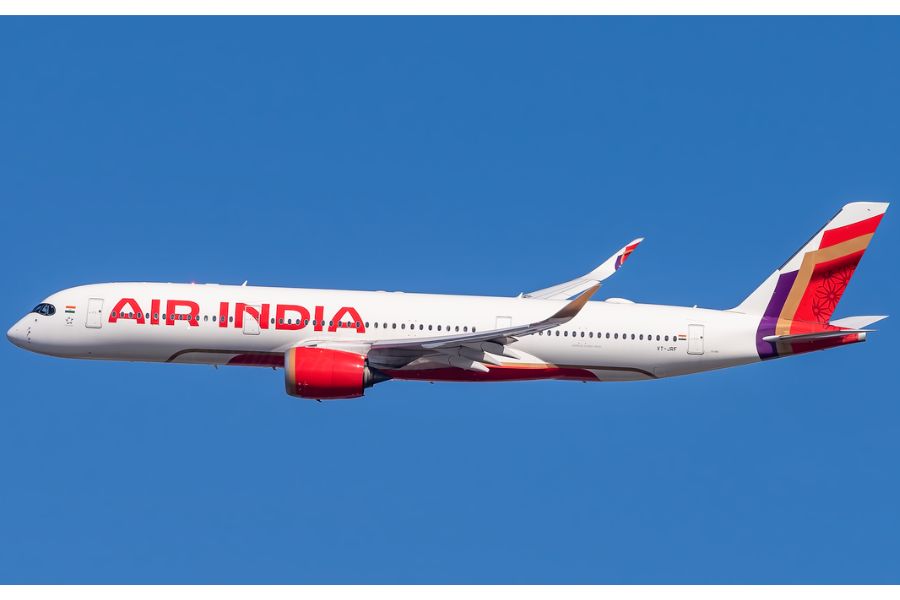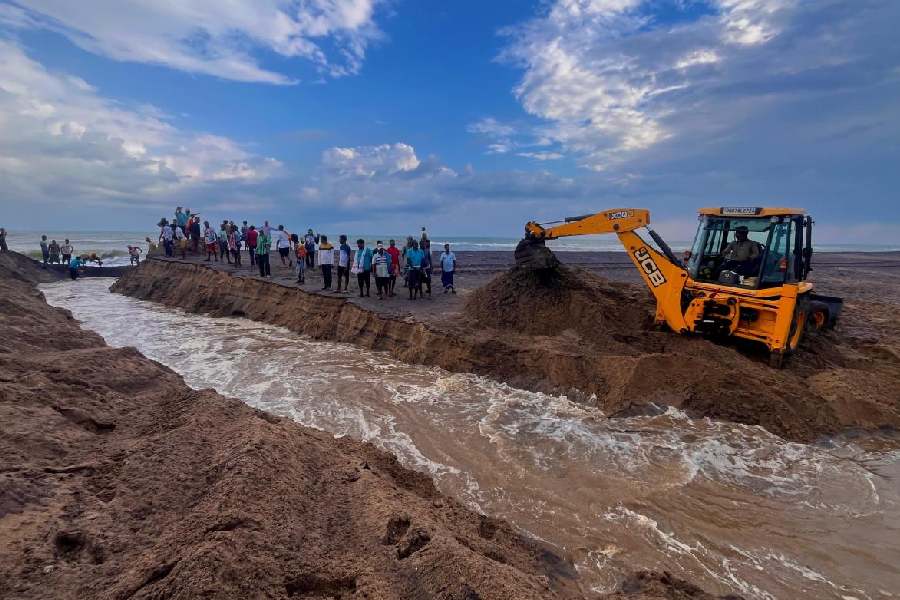 |
| (Top) Brian Cox on the Scottish Cemetery premises. Picture by Aranya Sen. (below) The crew shoot at the Tollygunge Club |
 |
Hollywood actor Brian Cox spent nearly a week in Calcutta in the first week of April, shooting for the documentary Brian Cox’s Jute Journey as its anchor. The film will be aired by the BBC this autumn, followed by a possible showing at the Calcutta Film Festival later in the year. Cox and the crew offered t2 a peek into their diary of the action-packed stay...
Day 1, Saturday, April 4:
The seven-member crew, among them director Brian Ross and executive producer John Archer of Scotland-based Hopscotch Films, set out with their Calcutta-based country producer Koushik Chatterjee of Bodhi Productions for a recce of the locations in which the crew would be shooting over the next four days. “We went to some jute mills on the other (Howrah) side of the Hooghly, based on the memories of a Scot back home whom we had spoken to before coming to India,” said Archer. After doing the rounds of half-a-dozen jute mills, the crew got a couple of “travelling shots” and returned to the hotel. Actor Brian Cox, the anchor of the documentary, was to join them from Los Angeles that night.
Day 2, Sunday, April 5
This was Brian Cox’s first day on the shoot and the actual start to the filming of the documentary. The crew started their day early with a visit to St Andrews Church at Dalhousie Square. “Seeing the church was overwhelming. Not only did we have an opportunity to attend a beautiful Palm Sunday service, we also managed to meet with some of the congregation, chat and film them,” said Cox.
After spending the entire morning on the church premises, the crew took a lunch break and then proceeded to the Scottish Cemetery in Park Circus in the hope of finding the graves of Scots who had lived in Calcutta, made it their home for over a hundred years, and were buried in the city.
“The cemetery is in a terrible state. Many of the graves are broken, it’s overgrown with weeds and the entire place reeks of extreme neglect,” said Cox. In their search for the graves of fellow Scots, the crew was helped by Norman Hall, the caretaker of the cemetery for years now, and his wife Loretta. Cox and the crew were rewarded — “we discovered a good 10-15 graves of people from Dundee who had lived in Calcutta and worked in the jute mills in the vicinity,” said Archer.
A Dundonian himself, Cox was visibly moved. “To uncover the history of my fellow Dundonians who travelled all the way to India to work under extreme conditions and died in an alien land is extremely emotional.” The shooting went off smoothly, with the crew having little to complain about. Except the sweltering heat. “The sun is a scorcher and the heat is killing. I have been through three shirts already,” laughed Cox.
Day 3, Monday, April 6
It dawned bright, sunny and very hot and the crew set out to film the jute fields that they had visited on the first day. “Since the documentary is about the life and times of the Scots working in the jute mills more than hundred years ago, I feel that it was Day 3 when we actually got down to some real work,” said Cox. The crew spoke to a number of workers on the field, going as far out as Singur. “It was the start of the growing season and so we managed some really beautiful shots,” said an excited Archer. The crew visited jute warehouses where they filmed extensively. “It felt good to get out of the city and see life in the countryside. We also met a number of pilgrims at Tarakeshwar,” smiled Cox.
The highlight of the day for Cox? Having freshly fried pakoras made with the jute plant! “They were delicious and I gobbled up quite a few of them,” he laughed.
Day 4, Tuesday, April 7
This was the day that the crew in general, and Cox in particular, was looking forward to, as they were to shoot at the jute mills on the outskirts of the city. “We went to a number of mills, from one at Chapadanga to the famous mill at Howrah,” said Cox.
The crew was overwhelmed by the welcome at each mill. “Everyone was very hospitable and so keen to let us film them and their lives,” smiled Archer. For Cox, this was an extremely emotional experience. “A couple of hours spent in these mills made me realise what hard work it was for my parents and all the others who laboured for years in the jute industry,” said Cox. The workers at each mill were interviewed, with Cox spending some personal time — off-camera — with them.
“It was exhilarating to see Hindus and Muslims working together in such harmony. In fact, jute for me is a metaphor for binding. We even discovered a mosque and a temple standing side by side in the vicinity of one mill,” said Cox.
The workers in these mills will find maximum footage in the hour-long documentary. “It was wonderful to see the women working so tirelessly. I was taken in by the amazing grace of Indian women who can take on the most menial tasks and impart such respectability to it,” marvelled Cox.
After a tiring day of filming at the jute mills, the crew drove back to the city. To some more work. “We interviewed an Indian whose father had studied medicine in Edinburgh and whose parents are buried in the Scottish Cemetery. He was a storehouse of information,” offered Archer.
Day 5, Wednesday, April 8
The penultimate day saw the crew leave the hotel early, only to spend half the day crammed in their cars in the intense heat. “We got lost! And when we found our way out, there were endless traffic jams. It was really frustrating,” lamented Cox. Finally the crew proceeded to the banks of the Hooghly for a few hours of filming the barges filled with mounds of jute. “Like the other days, the heat sapped all our energy,” rued Archer.
The evening was far more pleasant with the entire crew heading to the Tollygunge Club. “The idea of filming at the club was to capture what the social life of the Scots living in the city must have been like,” ventured Archer.
At the club, Cox and the crew met Mimi Dutt, a city-based broker of jute who deals in jute products, and historian Dr Sumita Sen. “Both provided us with a wealth of information. We filmed extensive interviews with them,” said Cox.
Day 6, Thursday, April 9
The last day of the shoot with the crew slated to catch a flight to Mumbai in the afternoon. Shooting was light with just a couple of shots taken at the Oberoi Grand, which had been their home for a week. But what pleased Cox most about the day? His visit to Akberallys, the famous suit-makers on Chowringhee. “They made me three jackets in just two days. Brilliant job,” beamed Cox. A quick lunch at the hotel followed and then it was time to leave for the airport.
“Calcutta has really been an exhilarating experience. I would have loved to be here longer for personal exploration. At the end of the day, this was not simply a jute journey, but a journey to one’s roots,” said Cox.










